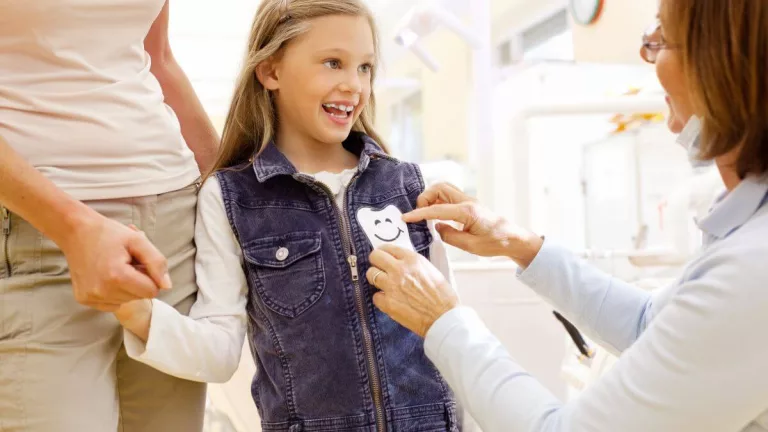How Positive Reinforcement Shapes Children’s Behavior


In the journey of raising children, one of the most powerful tools in a parent’s or caregiver’s arsenal is positive reinforcement. This approach not only molds behavior but also influences attitudes and fosters healthy development. If you’re a parent seeking effective ways to guide your child’s behavior, this guide will unravel the transformative potential of positive reinforcement. Let’s explore how this technique works and discover practical strategies to implement in your parenting toolkit.
Positive reinforcement is a technique rooted in the simple principle of rewarding desired behaviors. It involves acknowledging and rewarding a child’s actions or choices that align with your expectations. The goal is to increase the likelihood of those behaviors happening again. This can be achieved by offering praise, tangible rewards, or privileges.
Children are like sponges, absorbing experiences and reactions from their environment. Positive reinforcement acts as a guiding light, helping them navigate the path toward behaviors that are not only socially acceptable but also beneficial for personal growth. When parents and caregivers employ positive reinforcement, they set the stage for nurturing a child’s self-esteem, confidence, and a sense of accomplishment.
Eager to learn more about the self-confidence and take self-confidence test? Our article ‘How To Build Self-Confidence In Children – Test Your Child’s Self-Confidence’ is a must-read.
Parents, caregivers, and educators play pivotal roles in implementing positive reinforcement effectively. By understanding the dynamics of this technique, they can create an environment that facilitates desired behavior. Communicating expectations clearly and consistently is essential. For instance, if you want your child to complete their homework promptly, express your expectation and tie it to a positive outcome.
Immediate Recognition: Children thrive on immediate feedback. When you observe a positive behavior, acknowledge it promptly. This could be a simple “well done” or a high-five.
Specific Praise: Be specific in your praise. Instead of saying “good job,” mention what exactly you appreciate about their action. For example, “You did an excellent job of sharing your toys with your friend.”
Rewards and Incentives: Tangible rewards can reinforce positive behavior, especially in younger children. Offer a small treat, an extra story at bedtime, or additional playtime.
Privileges: Older children can be motivated by privileges. These might include extended screen time, a special outing, or the chance to choose a family activity.
To put things into perspective, let’s consider a few real-life scenarios:
Scenario 1 – Chores: Your child tidies up their room without being reminded. Acknowledge their effort with praise and perhaps the opportunity to choose a family movie for the evening.
Scenario 2 – School Performance: Your child achieves a good grade on a test. Celebrate their accomplishment by allowing them to select a favorite meal for dinner.
Scenario 3 – Sharing: If your child shares a toy with a sibling without fuss, express your appreciation and maybe offer a small treat.
While positive reinforcement is a valuable tool, it’s crucial to be aware of its potential drawbacks. Children are perceptive, and they can sometimes misinterpret reactions. For instance, if hitting an object leads to laughter from peers, a child might associate hitting with positive attention.
If you want to learn more about the reasons children laugh after they hurt others, Child Laughs When Hurting Others: Unveiling The Reasons is all you need.
To avoid unintended consequences:
Monitor Reactions: Observe how peers and adults react to behaviors, ensuring unintentional reinforcement of negatives is minimized.
Clarify Expectations: Clearly explain why certain behaviors are preferred or discouraged, helping children understand the reasoning behind them.
Shift Focus: If negative actions attract attention, redirect the focus toward positive alternatives to discourage repetition.
Nurture Intrinsic Values: Encourage children to recognize the inherent value of positive behavior for personal growth.
By remaining mindful of reinforcement’s impact, we can guide children toward balanced and positive development.
Positive reinforcement stands as a potent force in the journey of nurturing our children. It wields the power to shape behaviors, influence attitudes, and contribute to holistic development. As parents and caregivers, understanding its mechanisms allows us to pave the way for our children’s growth. Yet, in wielding this tool, it’s crucial to be conscious of both its strengths and pitfalls.
By celebrating desired behaviors and illuminating the path to personal success, positive reinforcement encourages children to thrive. It helps build confidence, instills a sense of accomplishment, and fosters empathy and responsibility.
However, as we guide our children, we must also be mindful of how reactions, intended or not, can reinforce negative behaviors. Peer responses, in particular, can inadvertently endorse actions we’d rather discourage. Therefore, maintaining vigilance is key. By clarifying expectations, focusing on intrinsic values, and fostering well-rounded growth, we can adeptly navigate this balance.
In the end, positive reinforcement, when harnessed with knowledge and care, becomes a compass in steering our children towards a future brimming with potential. It’s not just about behavior; it’s about nurturing individuals who carry the values of kindness, responsibility, and self-assurance throughout their lives.
While positive reinforcement is a valuable tool, it requires careful application. There’s a risk of inadvertently reinforcing negative behaviors if they receive attention or rewards. For instance, if a child hits an object and other children laugh, the child may associate hitting with positive social interactions. To counter this, it’s crucial to address negative behaviors through open communication and focus on redirecting them toward positive alternatives.
Yes, there are various behavior management strategies. Negative consequences, also known as punishment, involve removing privileges or giving time-outs for undesirable behavior. However, it’s important to use punishment sparingly and in conjunction with positive reinforcement to avoid causing fear or resentment. Open discussions about choices and their consequences can also help children understand the impact of their actions.
Effective positive reinforcement involves setting clear expectations, offering immediate feedback, and being consistent in your approach. Identify specific behaviors you want to encourage and be genuine in your praise or rewards. Additionally, tailor your approach to your child’s personality and preferences to ensure the reinforcement is meaningful to them.
Positive reinforcement can be effective for most children, but the extent of its impact may vary. Some children might be more motivated by tangible rewards, while others respond well to verbal praise or extra attention. Understanding your child’s personality and what resonates with them will help you customize your approach for optimal results.

Get Your Resources to Your Email Now!